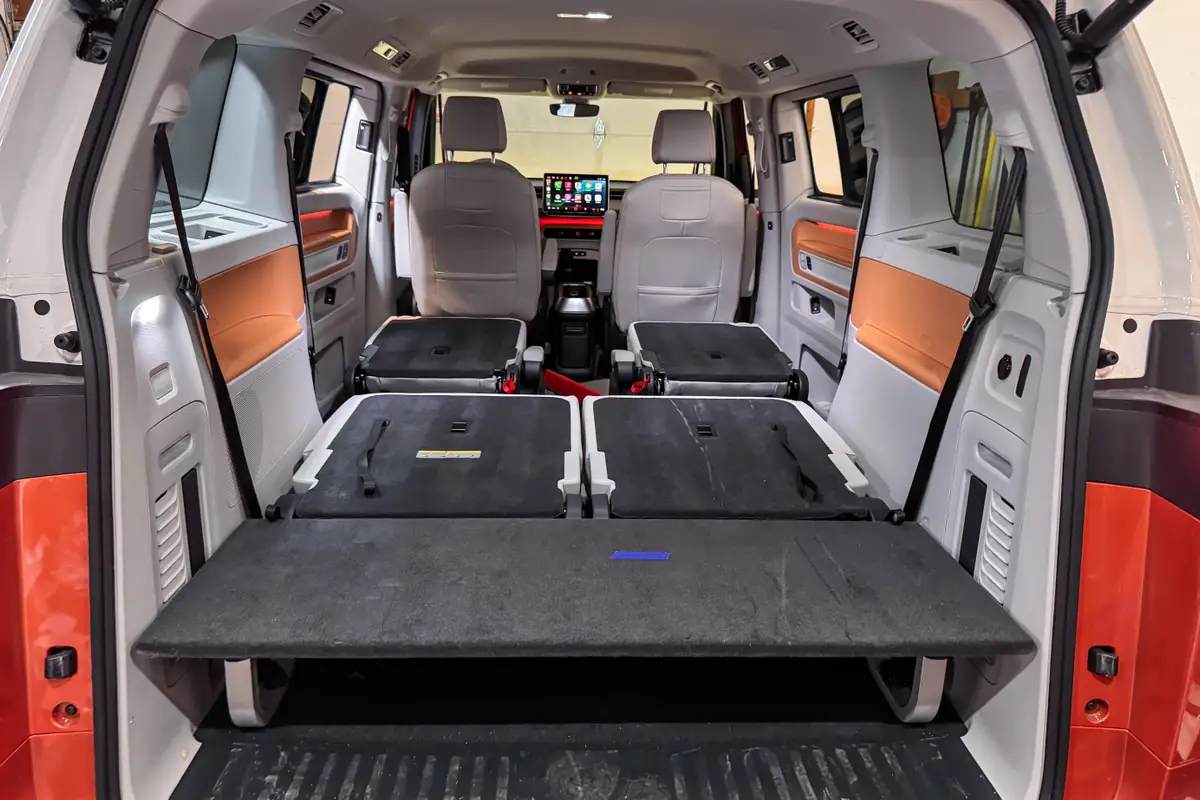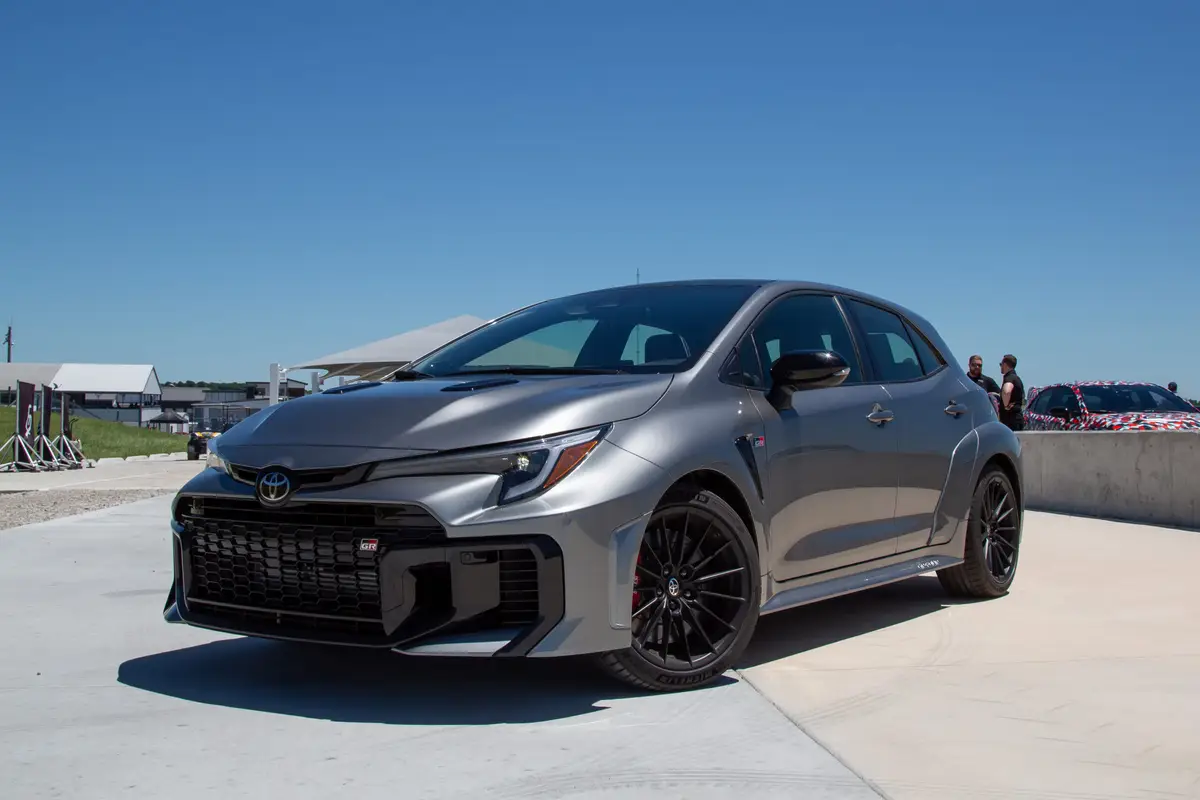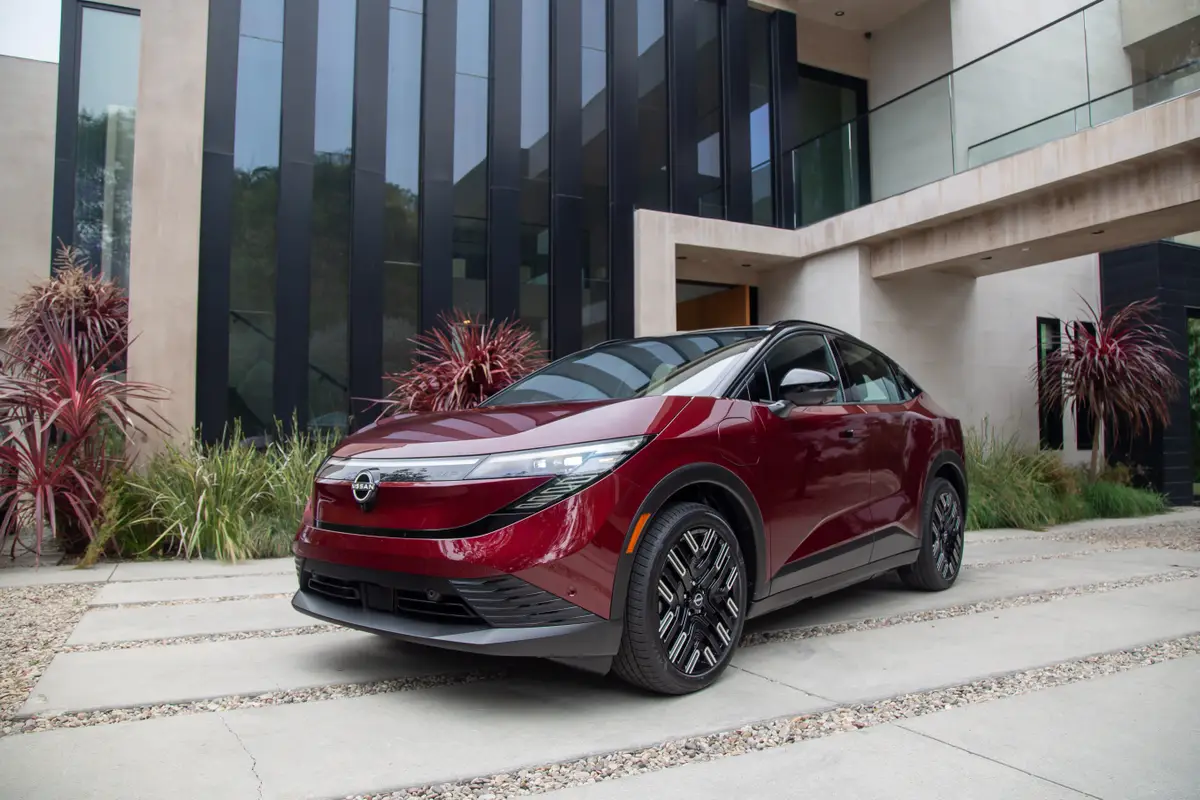Part 3 - What's the Diff? Ford F-150 SVT Raptor vs. Dodge Ram Power Wagon
Part 1: Introduction, Suspension, Engine, Transmission
Part 2: Traction, Tires, Underbody
Part 3: Agility, Capability, Price, Summary
Part 4:
—
Agility: Float like a Butterfly vs. Grinding In The Corners
It’s not really fair to compare trucks of different GVWRs and different wheelbases, but there are other factors at play here. Ford uses power rack-and-pinion steering on the Raptor, and it’s a lighter truck with a wider stance. It’s going to turn quicker and maneuver more easily.
The Power wagon is more of a crusher, with a turning circle almost three feet longer than the Raptor. The steering setup, hydraulic recirculating ball, is the kind of system that can force a tire to turn when it is wedged into a pile of boulders, even to the point of forcing the rocks to move. It’s not going to be so conducive to high-speed cornering and side-to-side transitioning on pavement. In short, the PowerWagon is not exactly what we’d call a tossable ride.
The Bottom Line:
The Dodge is a longer, heavier truck, with a very strong but less precise steering system. The Raptor is much lighter on its feet.
Edge: Raptor
Capability: 5-lug vs. 8-lug
The Power Wagon is a much bigger, heavier-duty truck. It’s based on Ram 2500 3/4-ton running gear and has a Class 4 hitch with a standard integrated factory brake controller. Its axles have 10.5 inch ring gears, the wheelbase is 148.9 inches. It can tow 10,300 pounds and carry 1,940 pounds in the bed on D-rated tires. And it’s a Crew Cab, a commercial-use configuration that is better at working, with a 6.5-foot box. Plus there are upgraded electrics, including a 180-amp alternator, that come with the package.
Meanwhile, the Raptor is based on the 133-inch wheelbase half-ton F-150 SuperCab, with a 5.5-foot box. As such, it’s more of a personal-use truck. That does not make it useless as a truck. The 6,950-pound GVWR Raptor is rated to tow up to 6,000 pounds on a Class 3 hitch, and has Ford’s trailer sway control electronics to help out. It can carry 1,020 pounds in the bed. You can work with it, and you can tow with it, and the numbers are far from anemic — but it’s still a half-ton truck.
The Bottom Line:
In the end, the difference is between eight lugs and five (actually six) lugs, a Crew Cab and a Super Cab, a Class 3 hitch and a Class 4 hitch, a 10.5-inch ring gear vs. a 9.75-inch ring gear, and so on. With the Power Wagon, Dodge has enhanced off-road capability without compromising the fundamental nature of the Ram 2500 as a heavy-duty truck. Dodge envisions the Power Wagon customer as a guy who uses the truck every day in his landscaping or construction business, and then, on weekends as a recreational tool. The Raptor owner might do the same, but not to an equal degree.
Edge: Power Wagon
Price: A Fistful of Dollars
Here we have a comparative jumble that goes deeper than apples vs. oranges. More like comparing peacocks to pianos, if you ask us. What’s more important, a Navigation system, or a winch? Here’s what we do know:
The Ford F-150 SVT Raptor starts at $38,020, plus a $975 destination charge. That includes the 5.4 V-8 and six-speed automatic. 4.10 axle ratios, dual outlet muffler, the SVT suspension, tow hooks, unique body work, auxiliary switch board and SVT rubber floor mats, among other things. Options such as the Luxury Package ($1950), Graphics Package ($1075), Navigation Package ($2430) bump the price from there. The 6.2 L V-8, will optional in early 2010, so to get 400 lbs.-ft of torque, you can tack on another $3,000. Our well-equipped test unit had both the luxury package and the navigation package, plus Molten Orange paint ($495), trailer brake controller ($230), rear view camera ($450) and Orange accented seats, for a total sticker of $46,020.
The Dodge Power Wagon pricing is based on the price for a Ram 2500 4×4 Crew Cab with SLT trim ($38,480) plus a $950 destination charge. SLT is one of the higher levels of trim in the Dodge line, including a wide variety of instrumentation, comfort, and convenience features. On top of that is the Power Wagon Group, which includes the trailer-tow package (Class IV hitch, wiring plus factory brake controller), 180-amp alternator, Tru-Lock front and rear axles with 4.56 gears; tow hooks, skid plates, 12,000 pound Warn winch, fog lamps, Uconnect Phone, the front sway bar disconnect and a 8,510-pound GVWR, plus styling and graphics touches. We’re told the Power Wagon Group will add “about $6,500” to the tab, bringing the “base price” for a Power Wagon to $45,930 with all the SLT amenities. Remaining options might include such niceties as a power sunroof, navigation system, rear back-up camera and leather-wrapped steering wheel. Specific options prices have not been released for 2010, but we imagine these items, taken together, might add another $6,000 to the sticker.
The Bottom Line:
Both trucks are well equipped at their “base price.” It will cost a little more to get into a Power Wagon at $45,930, but that will include items such as a winch and factory brake controller that are either optional or not available in the Raptor. It does not, however, include desirable equipment such as a navigation system, which could take the price higher than the Raptor with comparable options.
Prices for full-size pickups have been stunning for some time now, heading wildly north of $50k, but here we think both companies have done a good job of providing real value. Both trucks offer factory equipment that would run a whole lot more if you tried to add it on. Taking into account the fact that the Power Wagon is a bigger, heavier-duty truck with a bigger cab, we think pricing is fair in both cases.
Edge: Draw
Summary: Two Pretty Trucks. Pretty Freakin' Extreme!
There is always more to debate. We could talk about recovery, where the Power Wagon’s winch would give it the edge, and we could talk about styling, where the Raptor’s wide stance and functional vents add up to a uniquely imposing presence.
Let’s keep in mind that the “ultimate setup” varies by region. Tire choices and build strategies depend entirely on the severity of the terrain, seasonal weather patterns, soil qualities, and other local conditions. What works in Oregon would likely be out of place in Arizona or Tennessee.
Thinking along those lines, we see the Raptor as best in the desert. It’s a superstar anywhere the roads are open and there is dust in the air. The Power Wagon, on the other hand, would be great on a ranch or a farm, in the mountains, and in the woods.You could say that the Raptor is by far the better race truck, but that would depend on the course. In a race from Barstow to Vegas, we’ll take the Raptor, spot you 15 minutes and be on our second cold one when you show up. In a race held mostly in low range, on steep, rocky logging roads on a foggy, drizzly day in Oregon with a couple of fallen trees in the way, we’d put the mortgage money on the Power Wagon. With no winch, the Raptor might not even make it.
That said, to us it’s all the same. We’re looking at two impressive trucks, each excellently equipped for their given purpose. Neither one is junk; we want ‘em both. This represents new ground for pickups: Now consumers have not one, but two factory-engineered off-road pickups to choose from.
—
Part 1: Introduction, Suspension, Engine, Transmission
Part 2: Traction, Tires, Underbody
Part 3: Agility, Capability, Price, Summary
Part 4:

Featured stories




